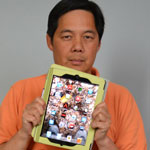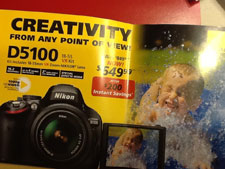 Here are my notes for an exercise that utilizes the iPad to create a user experience-focused mini-project that combines technical (functional requirements) and emotional (user needs and preferences) design.
Here are my notes for an exercise that utilizes the iPad to create a user experience-focused mini-project that combines technical (functional requirements) and emotional (user needs and preferences) design.
CSDGC
YOUTH CREATIVITY, INNOVATION & SUSTAINABLE LEADERSHIP PROGRAM
iPAD USABILITY EXERCISE
June 2, 2012
CONCEPT
Experience the interface between a developer/producer and an end-user by applying consult-design-build an iPad layout with a goal of customized usability.
FRAMEWORK
The iPad is the latest popular mobile information appliance, and is on the leading edge of human-computer interaction with largely untapped potential for usability. Students will examine various parameters of usability, develop a concept and attempt to gain user satisfaction.
THE ASSIGNMENT
Each team of students will consult with an iPad user to gather user preferences, habits and needs, then redesign the content and layout of the iPad screens – at first, on paper and getting the user buy-in; and second, implementing the design and getting customer feedback.
RULES
Each team will designate just one member to interview the client user. An interview may last up to 10 minutes.
Each team may designate up to two members to conduct an observational study. An observational study may last up to 15 minutes.
Each team must apply at least one IDEO Method Card in the data gathering part of their effort.
Up to $20 of paid apps may be purchased from the App Store. Paid apps already on the iPad do not count towards this limit. There is no limit of FREE apps from the App Store that may be installed.
Teams may provide their user with a one sheet Quick Guide to explain the new layout (this may be handy ahead of one of the challenges).
THE CHALLENGE
The team mentor will select one or more particular uses for the user to attempt using the new layout. This challenge will be scored by a combination of time in seconds to complete the task and the number of interactive motions (eg, taps, swipes, button pushes, etc). Mistaken moves will also count.
Additional notes (from my notepad):
IDEO Method Card scenarios to recommend – Flow Analysis, Personal Inventory, Cognitive Map, Narration, Fly on the Wall
The How? Understand customer habits and needs -> interview or prepare questionnaire.
Study current layout->discover likes/dislikes
Brainstorm possible improvement strategies-> Plan
Create new feature list
Uncover new uses
Increase efficiency
Address concerns
Documentation->rate satisfaction from user and developer perspectives
Implement changes->get feedback on tangibles and intangibles



